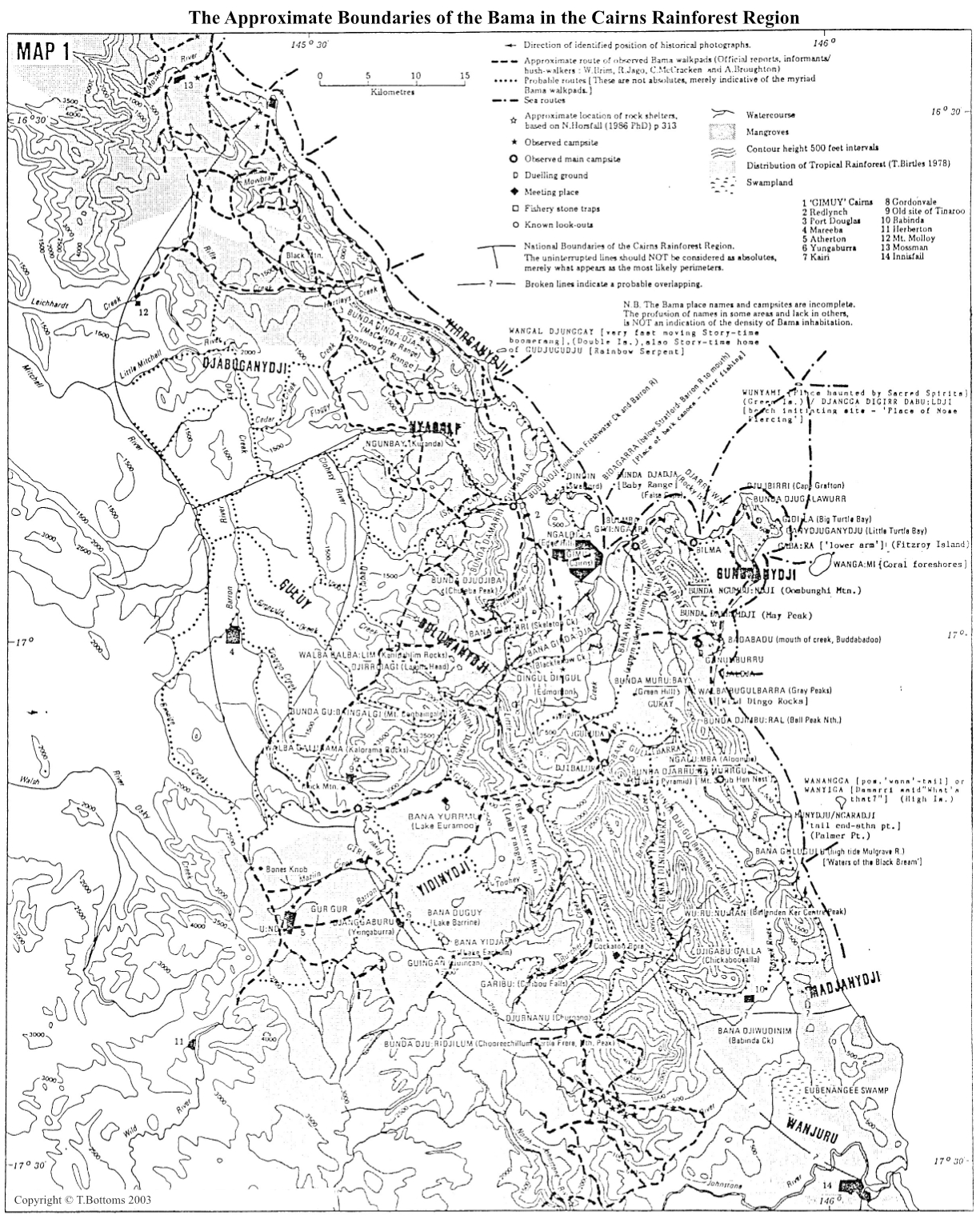By Timothy Bottoms, October 2021
Writing Djabugay Country (Allen & Unwin, 1999) was one of the most rewarding experiences of my life and it has enabled me to connect to First Nation people in a way that I never thought possible. I am enormously grateful for the opportunities and values of the relationships that have followed. Over the years since the publication, my attention has been drawn as to how the book is being viewed by local Bama. Apparently the book has caused quite a deal of debate amongst the Indigenous people of the Kuranda region.
My motivation that spurred me to write this history was to give Kuranda Bama, particularly those involved with the Tjapukai Cultural Park, an impetus to know their history. Through the 1990s I was contracted to the Wet Tropics Authority as a Ranger Trainer Co-Ordinator for the tribes: Djabugay, Yirrganydji and Malanbarra Yidinydji. There was a mood in Cairns society that the Bama, through the Tjapukai Cultural Park, were coming of age as a tourist attraction and as a business for local Indigenous people. In 1999 we could not have foretold that by 2020, the Cultural Park would have closed (due to Covid), and employment opportunities would have disappeared.
In the late 1990s I was wanting to help the Bama, which in this case was to look at the Tjapukai or Djabugay, by writing a history about themselves and Mona Mona Mission. Many Kuranda Indigenous people seemed to identify themselves as Djabuganydji, although I noted that there were some who termed themselves as Buluwanydji. From my research for my MA(Qual)1 I looked at my sources for my Map 1 which was then termed: “The Boundaries of the Djabugay-Yidiny speaking Bama of the Cairns Rainforest Region.” There is a bias towards the Djabugay which should acknowledge the tribes of Buluwanydji, Muluridji, the Kuku Yalanji and the Yirrganydji. My map of the Cairns Rainforest Region I would now term as: “The Approximate Boundaries of the Bama in the Cairns Rainforest Region.” Please see attachment which I consider the most up to-date version.
I now feel that I must re-write Djabugay Country under a new title: Bama Bulmba and give more acknowledgement to the Buluwanydji tribe, which encompasses south of the Barron River (Bana Wuruu) which Tindale included in his notes from 1938, as well as Yirrganydji, the Muluridji, and the Kuku Yalanji. This will be more encompassing of the Bama in this region than Djabugay Country and give more context of the historical characters that populated the rich panoply of our Australian Indigenous history.
The revised title ‘Bama Bulmba: An Aboriginal History of Tropical North Queensland’ will be released at first as a digital e-book in the near future, then a physical reprint if local schools and universities would like copies for students to access.
1 “DJARRUGAN, the Last of the Nesting”, JCU, Cairns, March 1990.

